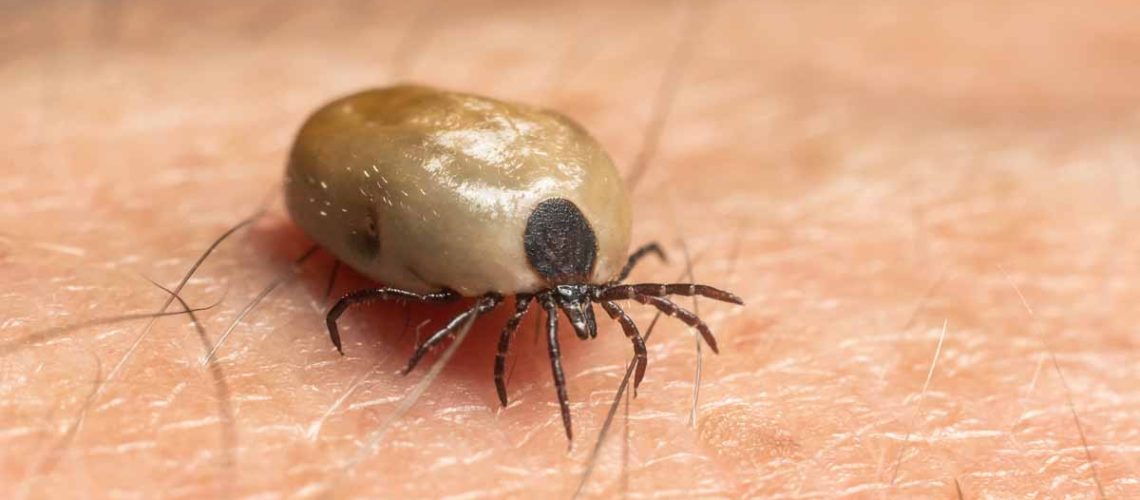
Whether running, biking, hiking or camping, being on the trail can be some of life’s most rewarding and peaceful moments. But while you’re out there, one little pest might try to ruin your adventure.
Take extra precautions after health officials reported the presence of a life-threatening virus carried by ticks in the UK. A 50-year-old man was the first known victim who was bitten while mountain biking in Yorkshire; the virus has also been detected in Dorset, Norfolk, and Hampshire. Additionally, another individual from Loch Earn, Scotland, has exhibited probable signs of infection.
The UKHSA reminds people to check their skin for ticks after spending time outdoors and remove them properly if found. Though tick-borne encephalitis virus is rare in Britain, there is a small risk for the general public; further increasing this risk are other infections spread by ticks, such as Lyme disease. To reduce the chances of tick bites, people should take safety measures outside regions where ticks are common, including woodlands or moorlands.
Here we look at what you should know, how to protect yourself whilst outside this summer, and your options for naturally protecting yourself from tick bites while exploring nature.
Ticks are pesky little critters that can cause many problems for outdoor enthusiasts. Fortunately, there are natural ways to repel them, helping you keep safe while out on the trail.
But first, it’s essential to understand ticks: their appearance, how they breed and feed, and why they’re hazardous to our health.
Ticks belong to the Arachnid family and come in many species and sizes. While it may be easy to identify the adult tick, it’s essential to look out for the much smaller larvae, tiny as a pinhead, which can be more challenging to spot.
Females lay eggs in damp leaf litter or soil; these hatch into larvae and attach themselves to their first host. After feeding on their host’s blood for a few days, they drop off and become more recognizable adults when ready for reproduction. Ticks can transmit diseases like Lyme Disease or tick-borne encephalitis virus (TBEV).
To ensure you don’t get bitten by ticks on your next trail adventure, check out our next section on natural tick repellents!
When you think of tick prevention, essential oils come to mind. Initially used by early inhabitants of North America centuries ago, these oils are still an effective strategy for repelling ticks on the trail.
Essential oils mask your scent and create an invisible barrier that keeps pests away. Eucalyptus, Citronella, oregano and lemon grass are all excellent natural tick repellents. The best part? You can blend with a carrier oil like coconut or almond oil and a few drops of each oil in a spray bottle.

This mixture can then be sprayed on clothes, backpacks, tents and even yourself for extra protection.
When used responsibly and appropriately diluted, essential oils are a safe and natural way to prevent tick bites when out on the trail. Before applying any crucial oil-based repellent solution to yourself or your gear, read up on the safety information regarding your specific mix to ensure the highest protection against ticks.

Ticks can ruin your otherwise perfect run, hike or ride if you’re not careful. But here’s the good news: there are natural tick repellents you can use to keep them away.
One of the most popular natural tick repellents uses essential oils like Citronella, tea tree, oregano, and lemon eucalyptus oil. These oils may deter ticks a few hours after application and can be found at health food shops or online retailers. Mix 10-30 drops in 100ml of water to apply essential oils and spray on skin or clothing.
Wearing protective clothing is crucial in preventing tick bites while on the trail. Clothing that fits snugly and is light-coloured makes it easier to detect if any ticks are crawling on your body.
But what else can you do?
Certain natural repellents can be sprayed on yourself or your clothes when spending time outdoors where ticks may live. Popular ingredients for such sprays include:

These natural oils effectively keep ticks away; they may not last as long as chemical repellents. Still, they are the more environmentally friendly option and generally do not have any side effects for the wearer.
Balmy Fox’s Citro Barrier Balm bar is formulated using only natural oils, butters and waxes, including Citronella, tea tree, oregano and lemon eucalyptus.
The 70g balm bar is in a handy travel tin you can store in your pocket or bag.
To apply, you either rub your fingers onto the bar and use it on your exposed skin areas or remove the bar from the tin and rub it on.
All in all, you can take simple steps to protect yourself from tick-borne illnesses. When out on the trail, wear clothing that covers your skin, such as long sleeves and trousers, and use natural tick repellents, such as essential oils and garlic or vinegar extracts, to keep ticks away. And, of course, do a thorough tick check when you get home. You can enjoy the great outdoors and remain safe and healthy with extra precaution.